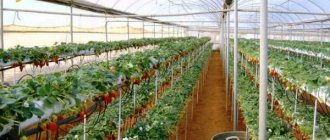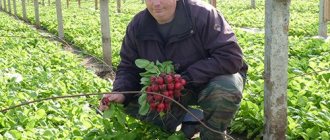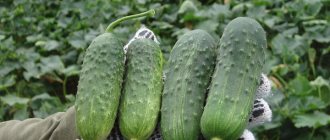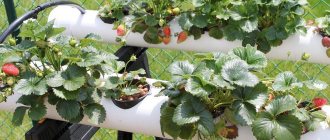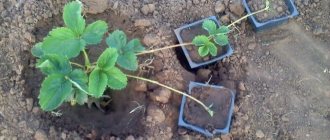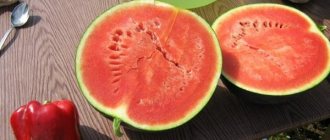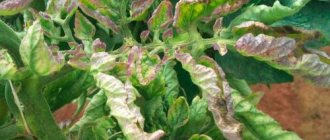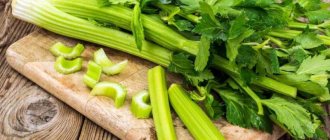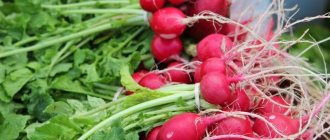When growing strawberries in greenhouses, you can harvest 5-6 harvests annually. This berry is in demand all year round, so many farmers choose it as a profitable greenhouse crop. Let's find out what types of greenhouses there are, what the Dutch method is, and how to get maximum income from growing strawberries - further.
Advantages and disadvantages of growing strawberries in a greenhouse
Strawberries grow excellently in open ground - this is how they are grown for their own needs. Growing strawberries in a greenhouse is usually done for profit - in the cold season, this berry costs several times more than in summer. Before planting strawberries indoors, it is important to calculate all the pros and cons of such a decision.
Advantages:
- In heated greenhouses, crops are harvested one after another - without taking into account seasonality.
- Fruiting, size and taste of berries, as well as the amount of harvest do not depend on the weather. In open ground, due to unfavorable conditions - dampness, rain, scorching sun, the yield is reduced by 25% or more.
- The costs of organizing greenhouse cultivation are recouped within a season.
- Berries grown in greenhouses are more readily purchased by supermarket chains.
- A good price for berries in winter allows you to make a significant profit.
- It is easier to care for berries in greenhouses than in garden beds.
- High business profitability – almost 100%.
Flaws:
- Large initial investment.
- Remuneration of employees. You can’t handle caring for strawberries grown for sale alone.
- The need to organize heating. If it is not possible to heat the greenhouse, the idea of growing berries all year round will have to be abandoned.
Preparatory work
You should immediately warn that you should not expect quick results. Even if you already have a greenhouse, you need to do two important things: properly prepare the soil in it and prepare high-quality planting material. It is planted in the fall, which means that you will get the first harvest next spring at best.
Where to get planting material
The most important question. If you are already growing strawberries in the open ground with your own hands and are satisfied with their taste, you can continue to propagate them. It's another matter when you have to start from scratch. In this case, it is best not to take seedlings from friends, but to buy young bushes at the nearest fruit nursery.
The following facts support this decision:
- Nurseries employ specialists who know well how to properly grow strawberries in a greenhouse or without one, and know how to protect plants from diseases. But the most important thing is to propagate those varieties that feel good in your region with its climatic characteristics;
- Here you can choose varieties with a certain ripening period. Or buy seedlings of different varieties that ripen at different times to extend the harvest period.
This is what a healthy seedling looks like
Advice. Inquire about the availability of remontant strawberries in the nursery. She will delight you with fresh berries from the second harvest in September.
The sale of seedlings in fruit nurseries begins in August - it is at this time that it is best to separate them from the mother plants and replant them. If you decide to limit yourself to your own planting material, you need to start selecting it in June. The instructions below will help you cope with this task:
- Pegs or other marks should be used to mark those bushes whose berries ripened earlier than others and do not show signs of disease.
- When the marked plants begin to produce tendrils, 4-5 of them (the strongest) should be left and rooted, and the rest and those that appear again should be cut off.
Advice. Experienced gardeners root mustaches in disposable cups dug into the ground. Then the root system will not be damaged during transplantation.
Before transplanting, the cups are dug up and the seedlings are carefully removed
- Before transplanting into a greenhouse, young plants should be watered regularly and the soil around them should be loosened.
How to prepare a greenhouse
Before growing strawberries in a greenhouse, you need to prepare beds with well-fertilized soil for planting. It is best to start this work long before planting - in the spring, especially if you are a supporter of natural farming. Raised beds are considered the best option - they are easier to care for. To create them, boxes with high sides are made from any available material - boards, plastic, metal sheets (see How to make beds for greenhouses and greenhouses correctly?).
The photo shows ready-made prefabricated sides for high beds made of galvanized steel
Garden waste is placed at the bottom of the resulting box - dry grass, leaves, pruned and shredded branches of fruit crops. It is covered with compost or humus, and then with fertile soil, to which sawdust can be added.
Advice. One of the main secrets of enriching the soil with useful microelements: before growing strawberries in a greenhouse, sow the beds with mustard, cereals or legumes. Without allowing the plants to ripen, they are mowed down and buried in the ground.
By the time the berries are planted, the soil in the beds will be ready; all that remains is to loosen it.
Greenhouse for growing strawberries
There are several options for greenhouses - they differ in design, materials used and heating systems. The choice of materials for building a greenhouse is chosen taking into account costs, climate, and growing method.
When creating a greenhouse, they follow approximately the following plan:
- greenhouse construction;
- creation of a microclimate system;
- purchase of gardening equipment;
- organization of an irrigation system;
- filling the greenhouse with soil;
- purchase of fertilizers and protective drugs against diseases and parasitic insects;
- purchase of planting material.
Greenhouse material
The greenhouse material must provide good thermal insulation, be durable, and be suitable for specific weather conditions. In the latter case, it is necessary to take into account minimum temperatures, wind strength, and the amount of precipitation.
There are three main materials for constructing greenhouses:
- Film. This is the cheapest and least reliable option. It is not suitable for winter. Over the course of a few years, the film deteriorates and begins to tear. It is not strong enough, becomes cloudy over time, and most importantly, it does not have sufficient heat-insulating ability.
For year-round cultivation of strawberries, a film greenhouse is the worst option, and it can only be used in southern latitudes, where winters are warm and have little snow. Maintaining the microclimate at a given level in film greenhouses is extremely difficult.
- Glass. Glass greenhouses are more reliable than film greenhouses. During their construction, a foundation is built. Glass is installed in special frames. Glass is a heavy and fragile material; although it is hard, it is extremely brittle; it is easily destroyed by hail, breaks under the weight of snow, and cracks during sudden temperature changes. It is easier to maintain a microclimate in glass greenhouses than in film analogues. To do this, you have to constantly monitor the temperature and manage ventilation and heating systems.
- Polycarbonate. This material is cheaper than glass, but it is reliable and can withstand heavy loads. Unlike film and glass, polycarbonate is not afraid of snow and gusty winds. Especially if you use a metal frame for the greenhouse, securely fixed in the ground. Cellular carbonate is superior to glass in many performance parameters - it is strong, lightweight and somewhat elastic. It is easy to clean and practically unbreakable. Polycarbonate greenhouses do not require a foundation. The polycarbonate plates are given the necessary bend and fixed to steel profiles. Polycarbonate greenhouses last 10-20 years.
Greenhouse made of polyethylene film
Glass greenhouse
Greenhouse made of polycarbonate sheets
Containers and their fastening
To grow strawberries in a greenhouse, containers are used - they are filled with nutritious soil, into which the plants are planted. The following containers are used:
- pots;
- bags;
- packages.
The containers must have holes at the bottom so that water can escape when watering. It is not recommended to grow strawberries in metal containers - this material is considered cold and is not used for growing plants.
The containers are placed on metal or wood racks. They must have strong load-bearing bars that can support the weight of containers filled with soil. The disadvantage of wooden structures is deformation under the influence of moisture prevailing in greenhouses. To prevent the wood from deteriorating ahead of time, it must be coated with waterproof varnishes.
Heating, watering, lighting systems
In a greenhouse, it is necessary to monitor three environmental characteristics:
- Temperature. Today, heating with electricity is most in demand. Automation is used for control. Thanks to sensors, the temperature is automatically adjusted and maintained at a given level. When choosing a heating option, consider the growing method. If strawberries are grown below - on the ground, a more intense heating mode is necessary. Plants that are in containers raised on racks are easier to heat - since the air is warmer at altitude.
- Humidity. It is maintained through irrigation. In greenhouses today, drip irrigation is installed, which not only provides the plants with the optimal amount of moisture, but also creates the required humidity. The parameter is controlled by a hygrograph or psychrometer. The latter is a primitive device that can be easily made from ordinary room thermometers.
To increase the humidity in the greenhouse, place a container of water closer to the heat source. To reduce humidity, it is enough to ventilate the greenhouse.
- Lighting. It is used to artificially lengthen daylight hours in winter. Most often, fluorescent lamps are installed. Today, fluorescent lamps are used less and less to illuminate greenhouses - they are gradually being replaced by economical and durable LED lamps.
Modern greenhouses, unlike primitive analogues in which a person has to manually adjust environmental parameters, are equipped with automation. All parameters are monitored here by sensors - temperature, humidity, lighting. True, such systems are expensive; only owners of profitable greenhouse businesses use them.
If you are just starting to grow berries in greenhouses, use inexpensive automation devices at the initial stage. So, for example, by installing a time relay and setting the parameters of artificial lighting, you can save yourself from monitoring the backlight mode.
When choosing a material and heating method for greenhouses, take into account the climatic features of the region:
- In the southern regions, where the temperature does not drop below 5 degrees below zero, it is beneficial to use thermos greenhouses heated by the sun's rays. Excess heat from “thermoses” is removed by ventilation.
- In Siberia and other cold regions, infrared heating and pumps are often used to maintain normal heat in the most severe frosts.
In temperate climates, biofuel can be used for heating, which releases heat as it decomposes.
Optional equipment
When growing in greenhouses, it is necessary to purchase additional equipment:
- Lamps. Economical and safe.
- Drip irrigation system.
- Heating equipment – gas or electric boilers, potbelly stoves” or others.
- Fans.
- Thermometers and hygrometers.
- Planting containers and shelving.
To better diffuse the light, it is recommended to equip the greenhouse with reflectors.
Care recommendations from experienced gardeners
To create positive conditions for growing strawberries in a greenhouse, gardeners recommend following the following care rules:
- It is necessary to adhere to daylight hours until 17 hours. This promotes rapid flowering and ovary formation.
- The temperature should be maintained in the greenhouse at 20-25 degrees. You need to monitor air humidity to get a good harvest.
- Watering should be regular so that water is constantly supplied to the root system, but does not fall on the flowers and leaves. It is better to use an automatic and drip system.
- Modern strawberry varieties almost always pollinate on their own, but experienced gardeners recommend creating conditions for the plants to pollinate.
- It is necessary to carry out disease prevention. Late blight rot is the most dangerous for strawberries. You can use Ridomil, Metaxil, Quadris.
- Strawberries are fertilized with mineral-containing fertilizers to ensure good growth. Feeding is carried out every two weeks.
The best greenhouse varieties
When growing strawberries for sale, the choice of variety is of utmost importance. Features of strawberry varieties suitable for doing business:
- Tasty, beautiful, one-dimensional, shelf-stable and transportable berries.
- Maintenance.
- Self-pollinating.
- High yield.
- They belong to day neutral varieties.
Day-neutral varieties are distinguished by continuous fruiting - their fruit buds are set every 5-6 weeks.
Through trials and experiments, experienced gardeners have identified strawberry varieties that are most suitable for growing in greenhouses:
- Gigantella. Dutch large-fruited variety. The weight of one berry can reach 100 g. Strawberries are dense, transportable, and have a rich taste and aroma of pineapple. The bushes are compact; about 3 kg are collected per bush during the season.
- Albion. A remontant variety that bears fruit many times. Year of release: 2006. Place of creation: USA. During the season it produces up to 2 kg of berries per bush. Berry weight – 40-60 g. Resistant to gray rot and anthracnose.
- Crown. Old Dutch variety. Year of breeding: 1972. It is productive, bears fruit for a long time, and has excellent agrotechnical characteristics. The weight of the berries is 15-30 g. They are medium dense, with good taste.
- Brighton. Belongs to semi-remontant varieties. The berries weigh 50-60 g, are red, beautiful, glossy. Well transported. The variety is resistant to fungi.
- Honey. Early variety. The berries are medium-sized, shiny, with a dessert taste. Productivity – 1.2 kg.
- San Andreas. An American variety that bears fruit 4 times in one season. The weight of the berries is about 35 g. Good keeping quality and transportability. Up to 1 kg is collected from a bush.
Mainly varieties for greenhouse cultivation - foreign selection. In addition to the listed varieties, the following are also suitable for indoor soil: Tristar, Darselect, Moscow Delicacy, Trufaut Produce, Capri, Temptation and others.
Choosing the best variety
Not every variety is suitable for growing in greenhouse conditions, so you need to be responsible when choosing the best variety.
The highest quality ones should have the following qualities:
- Self-pollinating. In a greenhouse, plants should preferably be self-pollinating, since pollinating thousands of bushes on your own is almost unrealistic and very expensive, and installing a hive with bees is irrational, since this is a very labor-intensive process that requires additional professional training.
- Varieties that can bear fruit continuously.
- The berries should be beautifully shaped, medium in size, easy to transport without damaging them.
These criteria fit:
- Honey;
- Sonata;
- Octave;
- Alba.
Peculiarity! To ensure a continuous harvest, it is recommended to plant varieties of different ripening rates (early ripening, mid-ripening and late ripening).
How to choose strawberry seedlings?
When the variety is selected, all that remains is to buy seedlings. It is important to purchase healthy and high-quality planting material. When choosing seedlings, proceed as follows:
- Inspect the foliage, it should be perfect - without defects, rich green in color. Spots, dots, wrinkles, and other damage are excluded.
- Count the leaves - one seedling should have at least 3 leaves.
- Inspect the root collar - it should be strong, at least 5 mm in diameter. Rot and stains are not allowed.
- Assess the condition of the root system. The length of the roots is from 7 cm, they must be strong, healthy, without defects.
Those who are going to grow strawberries for sale are recommended to purchase “healthy” seedlings. Such plants are grown from mother bushes under special conditions. Such seedlings are much more expensive than ordinary ones, but they are especially resistant to diseases and have high yields.
You can also grow seedlings yourself from seeds. How to do this is described here.
The maximum yield is observed in plants on which flower stalks were removed in a timely manner. Such seedlings are sold in certified nurseries.
Signs of diseases in strawberry seedlings:
- white dots indicate infection with a fungal disease;
- pale leaves – late blight;
- wrinkled foliage - mite damage.
Soil preparation and fertilization
How to grow strawberries in winter? To grow strawberries, it is recommended to use soil on which cereals previously grew. You can bring soil from the fields into the greenhouse. You should not plant strawberries after potatoes or cabbage. Gardeners often bring turf soil into greenhouses. It can be loosened a little with sawdust.
Regular application of fertilizing is an important stage in the process of vegetation and fruit formation. The plant requires both organic and mineral fertilizers. Gardeners most often use vegetable compost, rotted manure and peat as organic fertilizer. You can take ready-made complex fertilizers; they already contain both mineral and organic components. A mixture of superphosphate, urea, and potassium is suitable.
To grow good strawberries, you need to choose healthy material. You can purchase it or prepare it yourself by selecting young shoots from the mother bushes. Seedlings can be separated during the process of trimming the mustache.
You may be interested in: Methods for planting strawberries
Soil for growing
The soil for the greenhouse is prepared a year before planting the seedlings. Features of soil preparation:
- It is best to use land on which cereal crops grew.
- Add humus or compost. The soil is diluted with peat - it is needed to optimize its acidity and improve moisture and air permeability. Mineral wool, perlite, and coconut substrate are also used to loosen the soil. Lime is added to acidified soils - 50 kg per 1 sq.m.
- Immediately before planting, the soil is fertilized again. It is first moistened, and then potassium chloride and superphosphate are added, 15 and 30 g per 1 sq. m., respectively. m.
Having adjusted the composition and structure of the soil, they proceed to treating it with chemicals - this is done for disinfection. Exposure to high temperatures also helps fight weeds, pests and diseases.
Options for planting seedlings
There are several ways to plant strawberries in greenhouses. Moreover, from time to time gardeners come up with new, more progressive methods. Today the most popular cultivation is in pots, in soil and in bags.
Strawberry yield and cost recovery largely depend on the choice of option. If experienced gardeners harvest about 60 kg of berries from 1 sq. m, then beginners in the first years receive no more than 30-40 kg.
Let's consider different options for greenhouse cultivation of strawberries.
Classic cultivation in soil
This is the most common and simplest method of planting. Seedlings are planted directly into the ground, in pre-made beds. Advantages of the method:
- simplicity and ease of care;
- minimum costs - no need to build shelving or buy containers for planting seedlings.
The disadvantage of this method is that the usable area is limited to one level.
Seedlings are planted in a checkerboard pattern or using the two-line method. A gap of 30-40 cm is left between the lines, the distance between neighboring seedlings is 30 cm, between stripes is 90-100 cm. The beds are covered with spunbond or sprinkled with mulch so that weeds do not grow and the soil releases moisture more slowly.
In special pots
Each seedling is planted in a separate container with holes in the bottom. The pots are not placed on the ground; they are positioned so as to accommodate a maximum of strawberries in the greenhouse.
Special supports are installed in the greenhouse, on which hundreds of pots are fixed - they are arranged in several tiers. If you make 5-6 “floors”, then per 1 sq. m fits about fifty bushes.
To plant strawberry seedlings in pots, prepare the substrate:
- peat – 2 parts;
- sawdust – 1.5 parts;
- perlite – 1 part.
The diameter of the pots is about 20 cm. The material of manufacture is wood or plastic. Pots with seedlings are hung on special mounts or placed on racks.
Planting is done in the same way as ordinary flowers are planted:
- a drainage layer is placed at the bottom of the container;
- filled with wet substrate;
- make a hole and place the roots of the seedling in it;
- cover the roots and carefully compact the substrate;
- water with warm water.
The described method cannot be used for growing varieties with a powerful root system and tall stems.
In addition to classic pots, you can use multi-level and cylindrical versions, with pockets and others. The most popular option is multi-level combination pots with pockets.
In packages
Growing in bags is an alternative to the pot method. Bags are cheaper than pots and are easier to install. Each package contains several bushes. The substrate is poured into large white polyethylene bags. Filled bags are placed on racks or secured to pre-installed fasteners.
Features of planting strawberries in bags:
- The optimal size of bags is diameter – 16 cm, length – 210 cm.
- For 1 sq. m have no more than 3 packages.
- Expanded clay is placed on the bottom for drainage.
- Fill the bags with peat-perlite substrate. The ingredients are taken in equal parts. The second version of the mixture is turf soil mixed with humus and sawdust.
- Cuts 8 cm long are made in the bags. The distance between adjacent cuts is 30 cm. Seedlings are planted in these cuts.
With this method of cultivation, drip irrigation is organized. Plastic bags can be replaced with polypropylene bags - these are used to sell flour and sugar.
Growing strawberries using Dutch technology
This is the most popular method of growing strawberries in greenhouses today. The essence of the technology:
- Holes are cut in the black film into which the seedlings will be planted.
- The film prevents the growth of weeds, prevents moisture from evaporating, and prevents contamination of the berries on the substrate.
- Thanks to the black color, plants receive more light, which speeds up the ripening of berries and increases yield.
- Seedling material is continuously renewed. After harvesting, the fruit-bearing bushes are pulled out and new ones are planted in their place.
The method requires constant renewal of seedlings. Simple forcing allows you to get a harvest faster - new bushes produce berries rather than fruit-bearing ones.
For the Dutch method, only the highest-yielding varieties are used - Tristar, Sonata and others.
The difficulty of such cultivation is the need to create a separate plantation to obtain seedlings.
Read more about Dutch technology for growing strawberries here.
In the pipes
PVC pipes are both supports and containers for the substrate. Watering is carried out directly through pipes. Features of growing in pipes:
- Two types of pipes are used - with a diameter of 10-15 cm and 20-30 mm. In thick pipes, holes d = 5 cm are made with a drill at intervals of 15 cm. In thin pipes, small holes are drilled and then wrapped with agrofibre, which is attached with wire.
- Expanded clay is laid at the bottom of thick pipes, then thin tubes are inserted into them - they are needed before supplying water and fertilizers.
- Fill the thick pipe with substrate, and plant strawberries in the holes.
- Thin pipes are connected to an irrigation system or to a container of water, which is installed at a height.
- Plugs are inserted into thick pipes at both ends to prevent the soil from being washed away by water.
- Each bush should have 3-5 liters of substrate.
The following video describes how to grow strawberries in pipes for a greenhouse:
Caring for strawberries in a greenhouse
Strawberries are a productive berry, but require constant care. There are plenty of problems when growing this berry crop even in open ground. In greenhouse conditions, in addition to watering, fertilizing and preventive treatments, it is necessary to provide the plants with a normal level of humidity - for this, the greenhouse is regularly ventilated.
Additional lighting
Features of lighting in a greenhouse:
- When grown year-round, strawberries are provided with 10-14 hours of daylight.
- To obtain the required daylight hours, the lamps are turned on from 8-00 to 11-00 and from 17-00 to 20-00.
- Additional light is especially important during the release of flower stalks, during flowering and fruiting.
- It is recommended to use fluorescent lamps.
By increasing daylight hours, flowering and harvesting are accelerated. If the length of daylight is 8 hours, then the bushes will bloom on the 14th day after planting, if 16 hours - after 10 days.
Temperature
During planting of seedlings, the temperature should not exceed +10°C. Gradually it is raised to +18-20°C. When the flowers begin to bloom, the temperature should be at +20-24°C, and then at least +22-24°C.
Ventilation
When the temperature reaches +21°C, the greenhouse is ventilated - if an automatic system is not provided, this is done manually. Ventilation is carried out only during the day. Warm greenhouse air is released outside, and fresh air is let in.
By lowering temperature and humidity through ventilation, they maintain a favorable microclimate and also prevent the development of many diseases.
Humidity
When planting seedlings, humidity should be at 85%. After the seedlings take root, it is reduced to 75%. When plants bloom and bear fruit, the humidity should be even lower - no more than 70%.
Watering
Water strawberries as needed. Drip irrigation allows you to maintain the required soil moisture without water getting on the leaves and flowers of plants. It is important not to over-moisten the soil - excessive moisture leads to rot and fungal diseases. If there is no drip irrigation, the bushes are watered at the roots - then watering takes a lot of time.
Pollination
Most modern varieties are self-pollinating. But old varieties need pollination. Self-pollination of strawberries greatly simplifies agricultural cultivation techniques. However, there is an opinion that pollination is necessary for any strawberries grown in greenhouse conditions.
Additional pollination will not interfere even with self-pollinating varieties. Pollination methods:
- If the greenhouses are small, strawberries are pollinated by hand - with an ordinary brush.
- On a larger scale, it is more convenient to set up a hive with pollinating insects - bees or bumblebees will do. The method is unsafe, but effective - up to 95% of flowers are pollinated.
- Fans are used - pollen is carried by air currents. For every 100 sq. m requires 3 fans. Turn them on for several hours during the flowering period.
- Spraying water gives an efficiency of 45%.
Feeding
Plants after planting need potassium and nitrogen fertilizers. Recommended feeding:
- Potassium chloride diluted in water - 10 g per 10 l.
- Ammonium nitrate - make a solution of 80 g in 10 liters.
- Organic fertilizers - apply slurry diluted in water 1:5, chicken manure is diluted in a ratio of 1:10.
Feed strawberries every 2 weeks. It is impossible to exceed the norms of fertilizers - it can cause burns to the plant.
Read more about applying spring fertilizing and autumn fertilizing of strawberries.
Watch the episode of the TV show “Rural Stories” about the technologically correct cultivation of strawberries in a greenhouse:
Can it be grown all year round?
Before you start growing strawberries as a business, you should choose one of two methods of growing berries. The first method is growing a plant in the ground, this method gives only one harvest per year (15-17 tons of strawberries per hectare of land), which can die in bad weather conditions, which is unprofitable for gardeners, since the effort and money invested into business, they simply won’t pay off.
The second method is to grow the berries in greenhouse conditions, which makes it possible to harvest not only in the summer-spring period, but also in winter, and will also reduce the risk of plant disease and its relationship with natural factors. This method produces 30 or more tons of berries per hectare of land per year.
Using a greenhouse, of course, you can get a harvest all year round and, accordingly, profit from it, but only if you comply with the following conditions:
- temperature regime;
- timely watering;
- humidity.
Important! The strawberry business is not suitable for people living in cold climates, since it will take a lot of money to heat, which will significantly reduce profitability, if not lead to losses at all.
Strawberry diseases
Strawberries are easily affected by various diseases as soon as they find themselves in unfavorable conditions. This is why it is so important to maintain an appropriate microclimate in the greenhouse.
The most common strawberry diseases and measures to combat them:
| Disease | Symptoms | How to fight? |
| White rot | The leaves become lighter and become covered with a white coating. The berries are rotting. | The fungus cannot be completely destroyed. There is only one way out - to pick off infected leaves and berries and destroy them. |
| White spot | The leaves are covered with white dots. Develops during the flowering period. Leaves, stems, and sepals die. Leads to crop loss. | Suitable fungicides are Falcon or Euparen. |
| Powdery mildew | A white coating forms on the bottom of the leaf blades. Then it affects the entire plant. | Spray with copper sulfate and 4% soap solution, as well as Quadrix. |
| Brown spot | Kills up to 60% of plants. The leaves darken and become bright brown. Affects all above-ground parts. | Remove the affected parts of the plant. Preparations for prevention - Euparen and Metaxylol. |
Preventative treatment
Methods for preventing diseases and pests:
- Regular ventilation.
- Avoiding waterlogging of soil and air.
- Maintaining distances between neighboring bushes.
- Compliance with fertilizer standards. It is especially harmful to exceed the norms of nitrogen fertilizers.
- Preventive treatment with fungicides - they are introduced along with water through a drip irrigation system.
- Only healthy seedlings are planted.
- Timely removal of diseased, dried or broken stems and leaves.
- Destruction of diseased bushes.
- Before the formation of ovaries, strawberries are sprayed with Fitosporin, Alirin or Glyokladin - for prevention.
Growing strawberries in a greenhouse as a business
Strawberries are one of the most delicious berries, always in demand among consumers. The strawberry business quickly pays off and brings good income. True, you have to work for this - the berry crop requires care.
Expenses
When starting a strawberry greenhouse business, you need to calculate the initial costs - you will need a certain amount of capital.
Approximate calculation of land costs:
- the cost of the land plot is 500,000 rubles;
- construction of polycarbonate greenhouses – 500,000 rubles;
- purchase of seedlings - about 180,000 rubles (based on 3 greenhouses, each of which has 1,200 bushes planted at a cost of 50 rubles per piece);
- business registration – 20,000 rubles.
If you have your own plot of land - 1 hectare in size, then you will need 500,000-750,000 less money.
Also, the cost of strawberries includes current expenses. You will have to pay annually for:
- electricity and heating – 25,000 rubles;
- fertilizers, preparations for prevention – 5,000 rubles.
- other costs - 10,000 rubles.
You should also consider the cost of purchasing planting material. If you don’t grow seedlings on your own, you’ll have to buy them all the time.
Sales of products
Selling strawberries is one of the most important stages. Strawberries are a delicate berry; even the most shelf-stable varieties do not last long. You cannot delay the sale - the harvested crop must be sold as quickly as possible. Therefore, sales must be agreed upon in advance.
Sales options:
- Serve in stores, supermarkets, and other retail outlets.
- Hand over to processing plants.
- Sell to restaurants, cafes, etc.
- Organize your own strawberry sales points.
- Delivering strawberries to your home - this option is only suitable for a metropolis.
When and what kind of profit can I expect?
If you choose the right variety, you can harvest up to six harvests in a year. The price per 1 kg depends on the time of year. Let's calculate the approximate profit based on previously accepted conditions - there are three greenhouses.
Estimated income:
- In spring and summer, 1 kg of berries costs 100 rubles. If one greenhouse produces 360 kg, then from three greenhouses you can get more than 100,000 rubles.
- In autumn and winter, the price of berries is three times higher - 270-300 rubles per 1 kg. Accordingly, income increases to 270,000 rubles.
As you can see, growing strawberries in greenhouses can bring enormous profits, and all investments pay off in a maximum of 2 years.
Strawberries are a popular berry and you can make good money selling them. True, you will have to fulfill several conditions - invest a large sum in business development, find markets, select a successful variety, and properly organize the process of greenhouse cultivation and care.
0
0
Copy link
